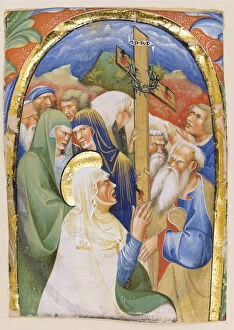Flavius Valerius Aurelius Constantinus Collection
Flavius Valerius Aurelius Constantinus, commonly known as Constantine the Great, was a prominent figure in history who left an indelible mark on Christianity
All Professionally Made to Order for Quick Shipping
Flavius Valerius Aurelius Constantinus, commonly known as Constantine the Great, was a prominent figure in history who left an indelible mark on Christianity. Born in 274 AD, he rose to become the first Christian Roman emperor and played a pivotal role in shaping the faith. One of his most significant contributions was convening the First Council of Nicaea in the early 4th century. This council aimed to resolve theological disputes within Christianity and establish a unified doctrine. The artist Strelitzas depicted this historic event with intricate detail, capturing the atmosphere of intellectual discourse and religious fervor. Constantine's influence extended beyond ecclesiastical matters. His head sculpted in bronze showcases his commanding presence and regal demeanor. Another marble sculpture from around 350 AD portrays him with solemnity, emphasizing his role as both emperor and protector of Christianity. The Dream of Saint Helena is another artwork that sheds light on Constantine's life. It depicts his mother receiving divine guidance through dreams about finding relics related to Jesus Christ's crucifixion – including fragments of the Holy Cross itself. Constantine's commitment to orthodoxy is evident in Carlo Magnone's painting depicting him burning Arian books during a period when heretical teachings threatened Christian unity. This act demonstrates his determination to preserve true Christian doctrine against dissenting beliefs. The Finding of the Holy Cross illuminates another aspect of Constantine's legacy: his efforts to uncover sacred artifacts associated with Jesus' crucifixion. This manuscript illumination by Master of Murano Gradual captures the reverence surrounding this discovery. Various anonymous artists have also depicted scenes from the First Council of Nicaea throughout different centuries, showcasing its enduring significance for Christians worldwide. These frescoes highlight moments where church leaders gathered under Constantine's patronage to discuss crucial matters affecting their faith.















